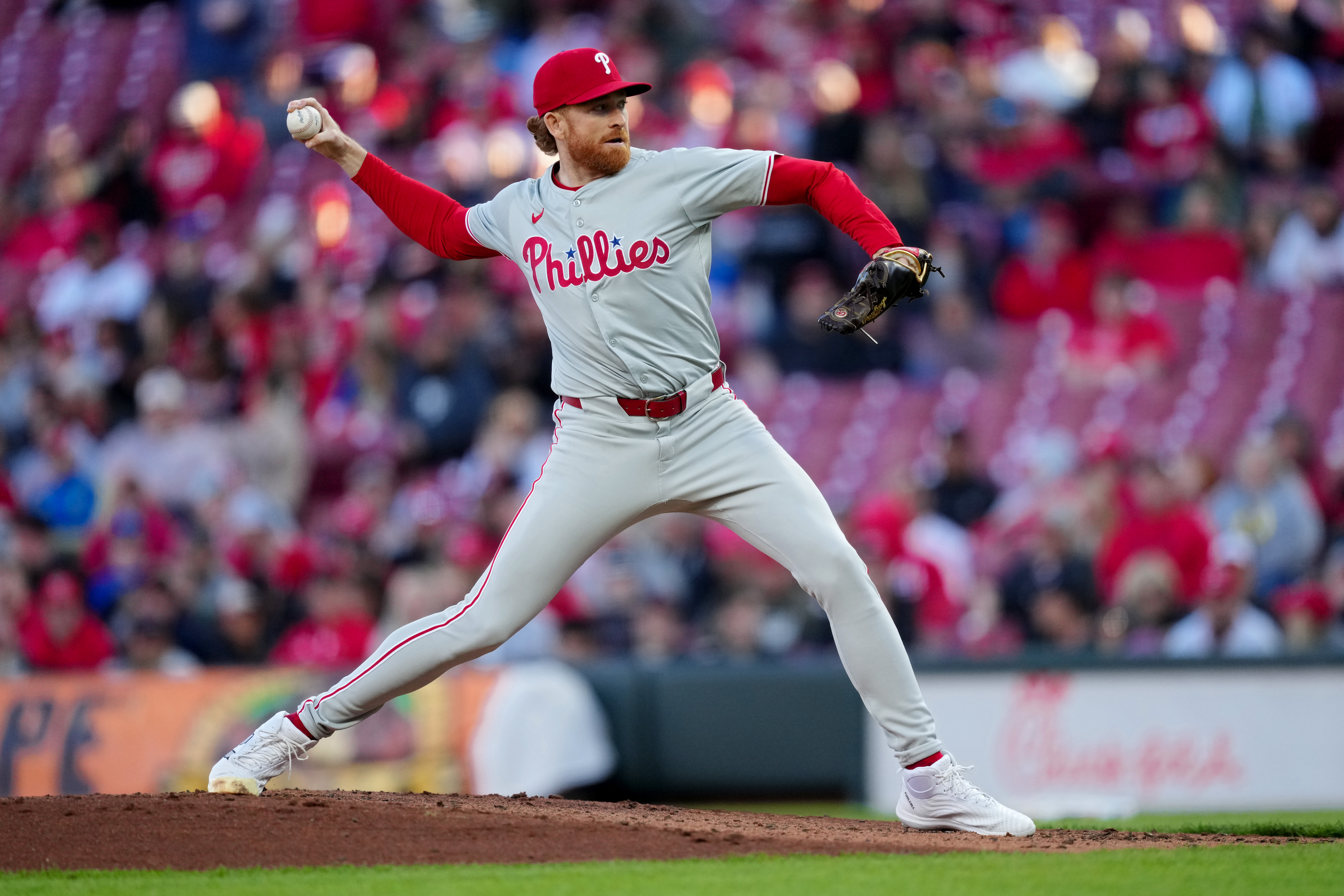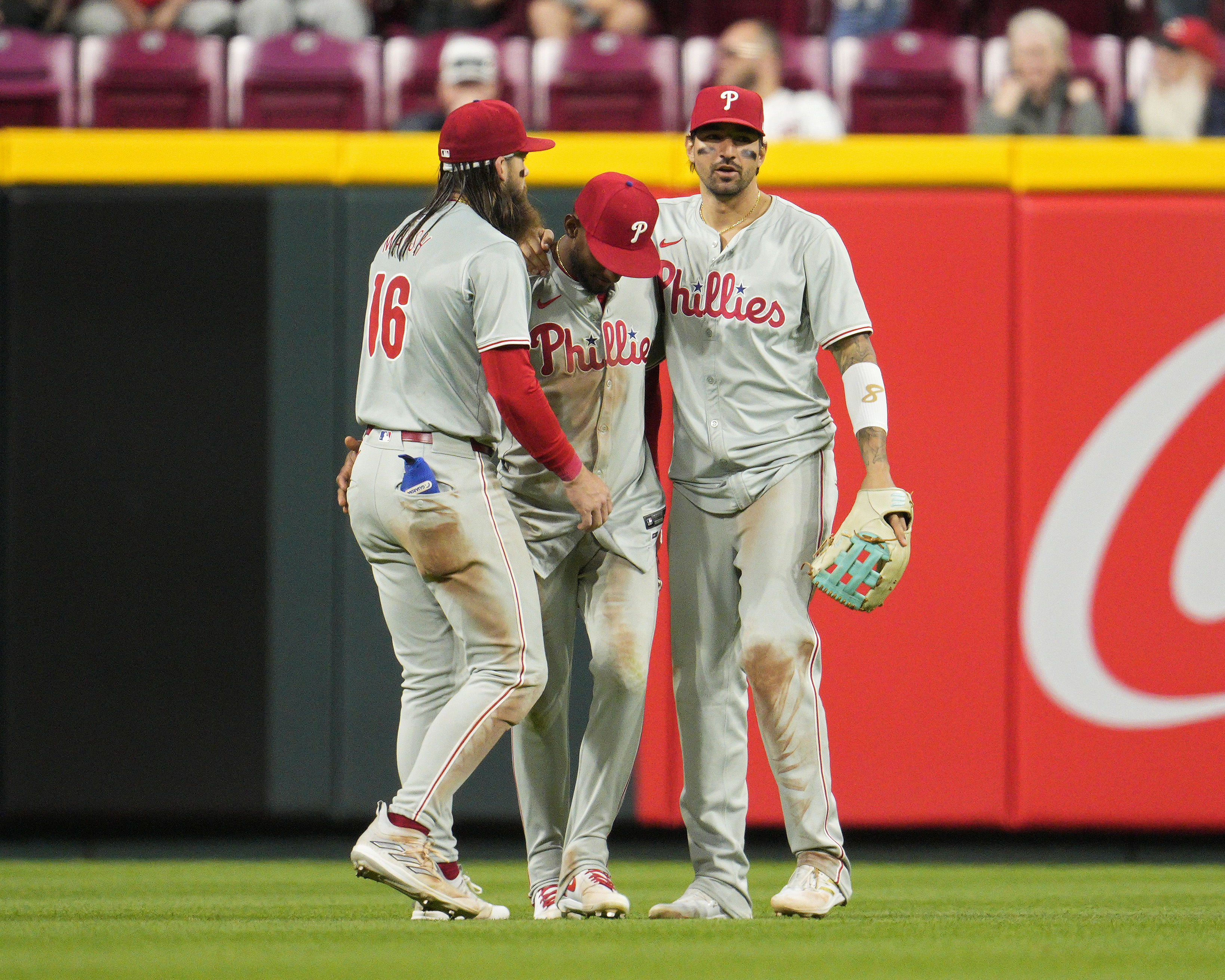Five more thoughts as baseball's winter meetings wrap up:
1. What now for McCutchen?
The hottest name as the winter meetings began this week was Andrew McCutchen, the Pirates' perennial All-Star centerfielder who had a .404 on-base percentage from 2012-15 with four straight top-five MVP finishes before falling off a cliff in 2016.
McCutchen hit 40 points worse last season as his bat and legs slowed and his approach deteriorated at times, perhaps out of frustration. There's been some speculation he was playing hurt.
The Nationals were the team most connected to McCutchen, but after failing to work out an agreement with the Pirates and losing out to the Red Sox for Chris Sale, Washington ultimately ended up trading for White Sox CF Adam Eaton.
So, what now for Cutch? It seems unlikely at this point he'd return to the Pirates ... would be kind of awkward. He knows his days there are numbered given Pittsburgh's payroll situation, and he hasn't yet accrued 10-and-5 rights.
But Pirates GM Neal Huntington told reporters Wednesday that the intent now is to keep McCutchen.
Philadelphia Phillies
Complete coverage of the Fightin' Phils and their MLB rivals from NBC Sports Philadelphia.
And McCutchen tweeted this, implying his lips are sealed after weeks of rumors.
🤐 keep working— andrew mccutchen (@TheCUTCH22) December 8, 2016
If McCutchen does eventually end up elsewhere, I don't think it will be the Phillies. There are certainly things to like, and I do believe McCutchen will bounce back in 2017, but at this point in the Phillies' rebuild and at this point in McCutchen's career, he's not the player to alter the organizational course for.
2. Shrewd Sale
The Sale trade played out exactly as it should have — the team with the leverage scanned the market, found a few potential deals and got maximum value for one of baseball's five best starting pitchers.
In many trades of superstars, you can look at the return package and quickly conclude which team got the better end. Those opinions aren't always proven true — prospects fail, veterans get hurt — but winners and losers are usually identifiable.
In the Sale trade, there was no clear winner or loser.
Sale is an ace, a pitcher you'd likely rather have start Game 1 of a playoff series than David Price. He's the ideal complement to Price, though in my opinion Sale is more of 1A to Price's 1B.
Price has exceptional stuff and command but no deception. He has a one-step delivery that doesn't throw a hitter off balance. Sale has maybe the most deceiving delivery of any major-league starter — it's all elbows and knees coming at you, especially if you're a lefty — to go along with elite stuff and usually above-average command.
They're both lefties but they offer much different looks for a hitter.
The centerpiece of the White Sox return, Yoan Moncada, is considered by many the best prospect in baseball — a big, athletic infielder who's settled in at 3B. He's got all the tools and the type of fluidity in his game that has enticed scouts as long as scouts have existed.
Michael Kopech is the prototypical young flamethrower, a 6-foot-3 righty who throws a triple-digit fastball with a plus breaking ball. You look at Kopech and see some Noah Syndergaard-like, Justin Verlander-like potential.
Sale should make the Red Sox about five wins better each of the next three seasons. In terms of World Series odds, the Red Sox may enter 2017 on an even plane with the Cubs.
And two or three years from now, Moncada and Kopech could be two of the top young players in baseball. This trade made a lot more sense for the White Sox than acquiring Victor Robles and Lucas Giolito from the Nationals. Both are intriguing prospects, but the Moncada-Kopech duo has more talent and upside.
The conversations between the White Sox and Nationals regarding Sale ultimately led Chicago to acquire Giolito as part of the package for Eaton.
The White Sox have done very well this offseason in acquiring three, maybe four top prospects. Moncada is a big-time building block, and the return for Eaton of Giolito, Reynaldo Lopez and Dane Dunning gives Chicago three right-handers with enormous upside.
3. No clue what the Marlins are thinking
For the better part of two weeks, the Marlins had been linked to Aroldis Chapman and Kenley Jansen, the two best closers on the market and probably the two best closers in baseball.
Chapman agreed late Wednesday night to a five-year, $96 million contract with the Yankees, by far the largest ever for a closer.
ESPN's Jayson Stark reported Tuesday night that Marlins owner/money man Jeffrey Loria had given his front office the go-ahead to sign either closer. Right now, that leaves just Jansen.
The question is why? The Marlins are not an elite closer away from winning the NL East. Adding Jansen will not catapult this team ahead of the Nationals or likely the Mets. The Marlins might not even be an elite closer away from a wild-card spot.
Miami is still trying to pick up the pieces after the death of Jose Fernandez. The tragic loss has left them with a middling rotation, which right now includes Wei-Yin Chen, Edinson Volquez, Adam Conley, Tom Koehler and Jeff Locke.
That rotation isn't leading you to October, not unless Giancarlo Stanton actually plays a full season and the Fish avoid regression from guys like Marcell Ozuna, J.T. Realmuto and Martin Prado.
Great New York Post columnist Joel Sherman also questioned Miami's approach this week, opining that the Marlins would be better off buying two lesser free-agent relievers like Koji Uehara and Brad Ziegler at the one-year cost of either Chapman or Jansen. It would make sense since Miami already has three good relievers in A.J. Ramos, Kyle Barraclough and David Phelps.
4. Brian Cashman's had quite a few months
The Yankees will not enter 2017 as the AL East favorite, but GM Brian Cashman has positioned them so well for the future, better than pretty much anyone could have expected back in July.
When the Yankees traded Andrew Miller to the Indians before the trade deadline, they picked up a top outfield power prospect in Clint Frazier and an intriguing young pitching prospect in Justus Sheffield. When they dealt Chapman to the Cubs, they picked up Gleyber Torres, one of the most well-thought-of shortstop prospects in baseball. (New York also added outfielder Billy McKinney, who could end up being a serviceable .280/.360/.430 type of player.)
And after it all, after transitioning the Yankees from an old, directionless team, Cashman ends up with all those prospects and Chapman.
In recent years there have been several opportunities for a team to re-sign a star player months after trading him for prospects.
Some thought the Red Sox would do it with Jon Lester after trading him to Oakland for Yoenis Cespedes.
When the Phillies were considering trading Cole Hamels the first time, before he signed his $144 million extension, the possibility existed Ruben Amaro Jr. would trade him and then try to re-sign him that offseason.
It almost happened with the Yankees and Carlos Beltran this offseason, before Beltran chose the Astros.
There have been more examples, but this is the first time I can recall the team selling high on the player, getting the prospects and then also getting the player back.
Great work by Cashman and the Yankees, who now have an infusion of young talent and still the best eight-ninth inning combination in the American League with Dellin Betances and Chapman.
5. Rockies must trade for pitching
The five-year, $70 million contract Ian Desmond agreed to with the Rockies this week was a stunner because they didn't seem to need more offense. They play in the game's best hitter's park and already have an annual MVP candidate in Nolan Arenado, an underrated stud in Charlie Blackmon, last year's batting champ in D.J. LeMahieu, emerging stars David Dahl and Trevor Story, and Carlos Gonzalez, who has 65 homers and 197 RBIs the last two seasons.
And yet the Rockies added Desmond to the second-largest contract in their franchise's history, behind only that futile six-figure deal for Mike Hampton.
They're also reportedly interested in last year's home run champ, Mark Trumbo. With or without Trumbo, the Rockies right now have the deepest lineup in the NL, one that should still thrive away from Coors Field.
But they've also backed themselves into a corner here of needing to trade one of these talented position players for a top-of-the-rotation arm.
MLB Network's Jon Morosi reported Thursday that the Rockies and Blue Jays began discussing a potential trade involving Blackmon and 25-year-old right-hander Marcus Stroman. The Blue Jays, as of yet, do not seem inclined to make the deal. Stroman won't reach free agency until after the 2020 season, whereas Blackmon's contract expires after 2018. The difference in cost and years of control seems to be too much for the Jays.
Blackmon, who last year hit .324/.381/.552 with 35 doubles, five triples, 29 homers and 82 RBIs, is the most logical trade candidate for the Rockies because he's starting to get expensive. But the Jays' unwillingness to make that Stroman deal could mean that moving even a player as talented as Blackmon for equal value could prove difficult for the Rox.
Looking around the league, a team like the Indians could be a fit for Blackmon since they have an enviable group of starting pitchers in Corey Kluber, Carlos Carrasco, Trevor Bauer and Danny Salazar. Carrasco for Blackmon would seem even, but we shall see.



